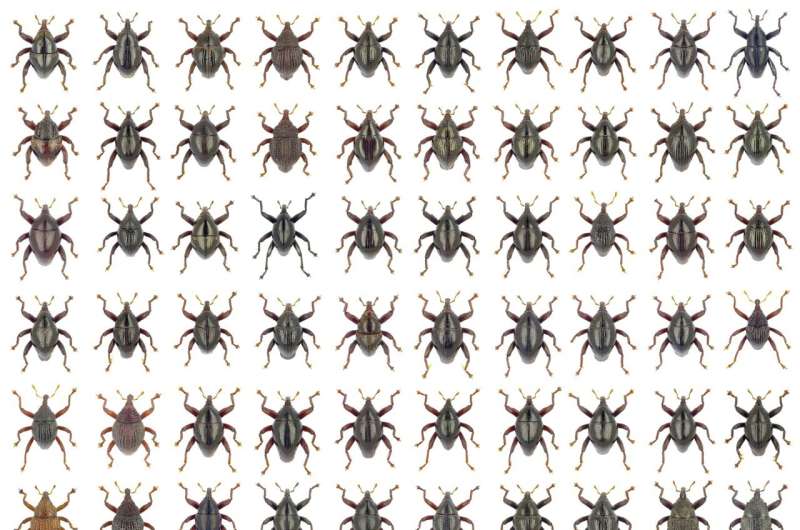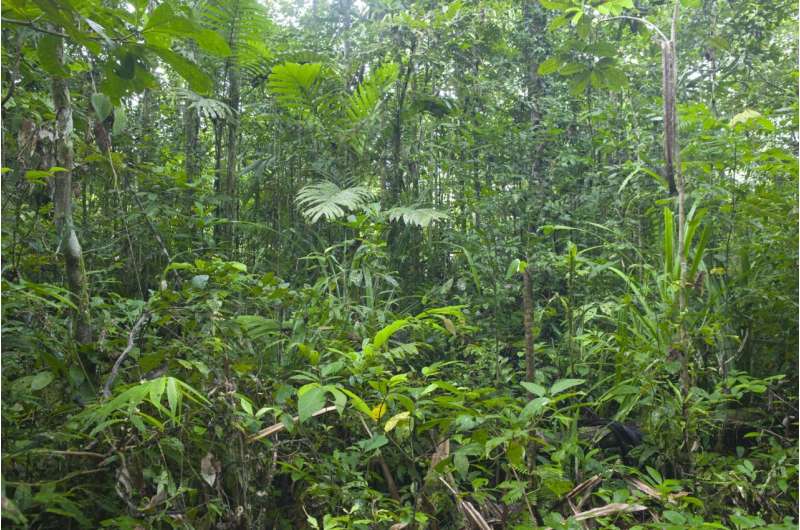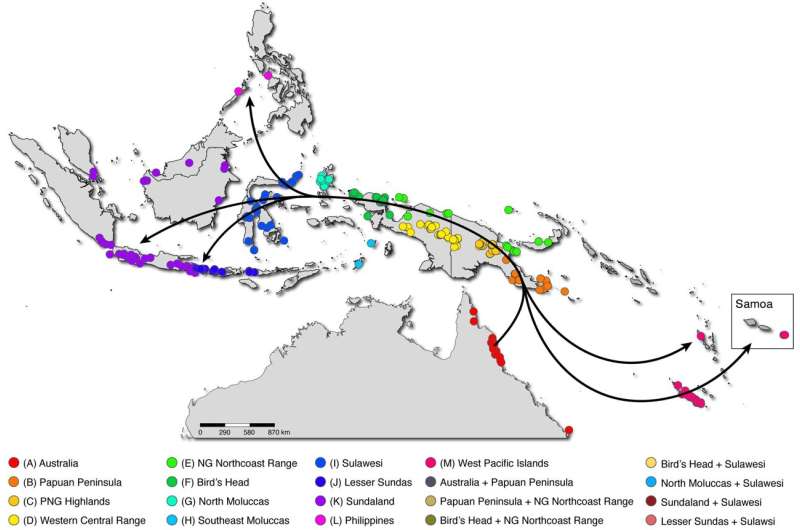This article has been reviewed according to Science X's editorial process and policies. Editors have highlighted the following attributes while ensuring the content's credibility:
fact-checked
peer-reviewed publication
trusted source
proofread
Explaining the geological history of Indonesia using beetle evolution

A new study on weevils led by biologists Harald Letsch from the University of Vienna and Alexander Riedel from the State Natural History Museum in Karlsruhe brings new cross-disciplinary findings. Based on the evolution of the weevils there, conclusions can be drawn about the geological development of Indonesia and the Western Pacific.
The authors were able to sketch maps of land development in Indonesia and the Western Pacific that looked 40 million years into the past and showed, for example, that the Papuan peninsulas rose from the sea earlier than previously thought. The study was recently published in the journal Ecography.
The islands of Indonesia and the Western Pacific are known to be home to very rich biodiversity, including a myriad of flightless weevils of the genus Trigonopterus. Based on DNA data from 1,006 species of weevil, biologist Harald Letsch from the University of Vienna calculated a temporal family tree.
This not only creates one of the most comprehensive family trees ever created for a single animal genus, it also enables new insights into the complex geological history of the region's origins as well as its extraordinary and threatened biodiversity.

Geographic maps dating back up to 40 million years
Beetles of the genus Trigonopterus are wingless and therefore flightless, which limits most species to relatively small areas of distribution. In such a case, geographical isolation leads to individual populations diverging and ultimately forming separate species.
In an islanded habitat, diversification rates indicate the presence and eventual increase in available habitat, regardless of whether these land areas still exist today. Biological data such as that of weevils can provide information about the geological landscape of their habitats, even if the islands that were once present have now disappeared due to erosion.
Using the evolutionary history of Trigonopterus , Letsch and his colleagues were finally able to sketch maps of land development in Indonesia and the Western Pacific that look 40 million years into the past. They provide fascinating new insights into the geological history of the region. For example, based on the analysis, the authors assume that parts of the Papuan Peninsula of New Guinea rose from the sea 40 million years ago, earlier than some current hypotheses assume.

Island under water discovered today
According to the analyses , the diversification of Trigonopterus on Samoa began around 23 million years ago. An explanation for this is provided by the westernmost extension of the island chain, which is now under water. An early island and its habitats probably fell victim to erosion and can now only be seen on undersea relief maps.
With their extensive investigation, the scientists were able to show that this approach to geology can provide valuable information. Thus, the role of so-called biogeography could change from a receiver of information to a supplier of useful information for other scientific fields.
More information: Harald Letsch et al, Beetle evolution illuminates the geological history of the World's most diverse tropical archipelago, Ecography (2023). DOI: 10.1111/ecog.06898
Journal information: Ecography
Provided by University of Vienna




















